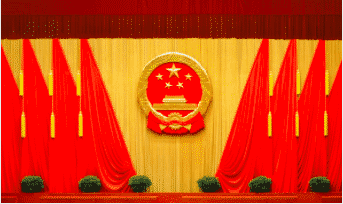Chinese climate strategy has faced much criticism in the past few weeks around COP26. President Xi Jinping was absent at the summit, and China’s long-awaited greenhouse gas plan disappointed climate watchers. But is the PRC really that behind on climate action?
China published its emissions strategy days before the Glasgow summit. Critics have called the plan disappointing for its lack of significant improvement on targets set at Paris, raising targets on the share of non-fossil fuels in energy consumption by only 5%.
However, the strategy also included a 1.5 billion cubic metre increase in reforestation goals, and set a specific target for solar and wind capacity by 2030: 1,200GW. That’s more than the entire installed electricity system of the USA.
The lack of attention paid to China’s climate progress has been emphasised by Chinese officials. Top PRC administrators like Wang Yi have stressed China’s detailed and ongoing concrete plans to reach climate targets.
For example, the CCP’s ‘1+N’ policy system has set out a schedule of 37 tasks China needed to complete by 2060 in support of climate goals, in legislation, policy, technology, finance, and more. The coming year will see dozens of documents published detailing further specialised actions.

The problem is that clear and concise commitments are difficult for outsiders to spot in Chinese climate documents, which Wang claims cannot be interpreted by external climate watchers. One such commitment flying under the radar is China’s promise to peak coal consumption by 2025.
What about Xi Jinping’s absenteeism in Glasgow?
Biden would have us see it a sign of poor leadership. But I tend to agree with analysts like Sam Geall, who call this demonisation a “red herring”. The simplest explanation is that China’s COVID quarantine guidelines are strict, requiring returning travellers to isolate for three weeks. Xi has not left the country since the beginning of the pandemic.
But other than that, there are deeper factors influencing his absence. Last week the Central Committee of the CCP met for its 6th plenum – a meeting that has historically focused on solidifying ideology for the next year’s leadership reshuffle.

The same plenum has consolidated the power of Mao and Deng Xiaoping before Xi, and despite outward appearances the CCP is as prone to factionalism and internal tension as any other government. It’s highly likely Glasgow was not a priority for Xi – analysts like Qin Yan say this is why Xi Jinping sent a written message and not a video.
Finally, it’s my opinion China and Russia abstained from leadership attendance of Cop26 to send a message to America that it was no longer in charge. In actuality, Xi’s absence has little to do with China’s future climate action, and more to do with maintaining an image of strong resistance to US hegemony.
The surprise US-China climate cooperation agreement would support this theory. So would China’s leading role in modifying the language of the Cop26 deal from ‘phasing out’ coal, to ‘phasing down’ coal.
In predicting China’s future in climate leadership, it’s important to resist shallow media narratives. As leading Chinese delegate Xie Zhenhua said, it’s action that is “the key for our efforts of addressing climate change.”
Follow Maddie’s journalism journey on Twitter.